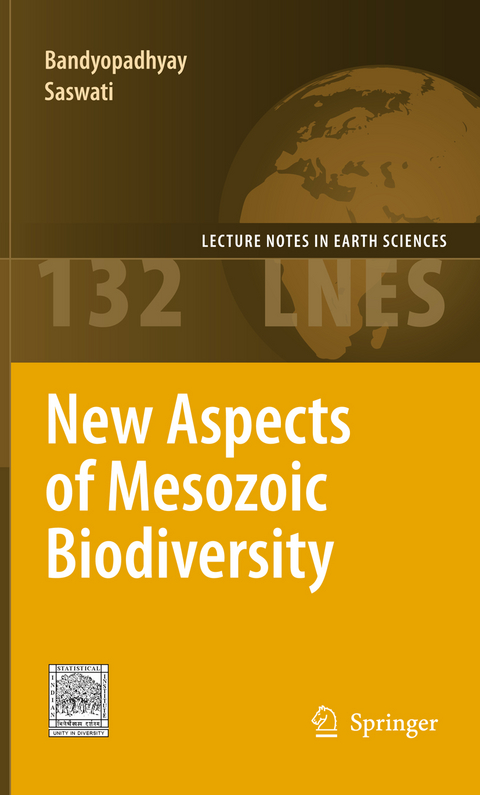
New Aspects of Mesozoic Biodiversity
Springer Berlin (Verlag)
978-3-642-26390-3 (ISBN)
The Indian Statistical Institute (ISI) was established on 17th December, 1931 by a great visionary Prof. Prasanta Chandra Mahalanobis to promote research in the theory and applications of statistics as a new scienti c discipline in India. In 1959, Pandit Jawaharlal Nehru, the then Prime Minister of India introduced the ISI Act in the parliament and designated it as an Institution of National Importance because of its remarkable achievements in statistical work as well as its contribution to economic planning. Today, the Indian Statistical Institute occupies a prestigious position in the a- demic rmament. It has been a haven for bright and talented academics working in a number of disciplines. Its research faculty has done India proud in the arenas of Statistics, Mathematics, Economics, Computer Science, among others. Over s- enty ve years, it has grown into a massive banyan tree, like the institute emblem. The Institute now serves the nation as a uni ed and monolithic organization from different places, namely Kolkata, the Headquarters, Delhi, Bangalore, and Chennai, three centers, a network of ve SQC-OR Units located at Mumbai, Pune, Baroda, Hyderabad and Coimbatore, and a branch ( eld station) at Giridih. The platinum jubilee celebrations of ISI have been launched by Honorable Prime Minister Prof. Manmohan Singh on December 24, 2006, and the Govt. of India has declared 29th June as the "Statistics Day" to commemorate the birthday of Prof. Mahalanobis nationally.
Main fields of interest:Vertebrate palaeontology including origin, evolution, functional morphology and systematic study of Mesozoic vertebrates, especially the reptiles, their taphonomy and bone histology. Gondwana geology including stratigraphy and depositional environment, biochronology and palaeobiogeography.
New Perspectives on the Evolution of Late Palaeozoic and Mesozoic Terrestrial Tetrapods.- The Origin, Early History and Diversification of Lepidosauromorph Reptiles.- Rahiolisaurus gujaratensis, n. gen. n. sp., A New Abelisaurid Theropod from the Late Cretaceous of India.- Pterosauria from the Late Triassic of Southern Brazil.- Bone Histology of a Kannemeyeriid Dicynodont Wadiasaurus: Palaeobiological Implications.- Indian Cretaceous Terrestrial Vertebrates: Cosmopolitanism and Endemism in a Geodynamic Plate Tectonic Framework.- The Wandering Indian Plate and Its Changing Biogeography During the Late Cretaceous-Early Tertiary Period.
From the reviews:
"This book, which is a spin-off of a session of an international conference held at the Indian Statistical Institute (Kolkata, India) in early 2008. ... the chapters are well-organized and contain very detailed reference lists. ... I can recommend it strongly to specialists in Late Palaeozoic-Mesozoic terrestrial vertebrates. Palaeontologists with wide interests, as well as earth scientists interested in the geology and plate tectonics of Gondwana will also enjoy reading this book." (Dmitry A. Ruban, Geologos, Vol. 16 (3), September, 2010)| Erscheint lt. Verlag | 5.9.2012 |
|---|---|
| Reihe/Serie | Lecture Notes in Earth Sciences |
| Zusatzinfo | XIV, 134 p. |
| Verlagsort | Berlin |
| Sprache | englisch |
| Maße | 155 x 235 mm |
| Gewicht | 234 g |
| Themenwelt | Naturwissenschaften ► Biologie ► Ökologie / Naturschutz |
| Naturwissenschaften ► Geowissenschaften ► Geografie / Kartografie | |
| Naturwissenschaften ► Geowissenschaften ► Mineralogie / Paläontologie | |
| Schlagworte | biodiversity • Bone histology • Functional morphology • Mesozoic • Palaeoecology • Palaeontology • Reptiles • Stratigraphy • taphonomy |
| ISBN-10 | 3-642-26390-9 / 3642263909 |
| ISBN-13 | 978-3-642-26390-3 / 9783642263903 |
| Zustand | Neuware |
| Haben Sie eine Frage zum Produkt? |
aus dem Bereich


